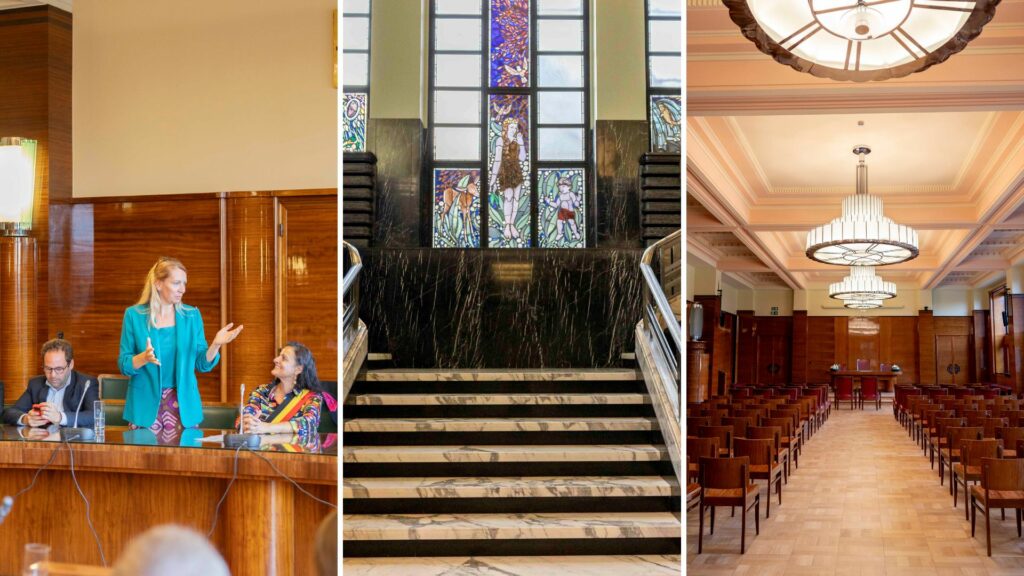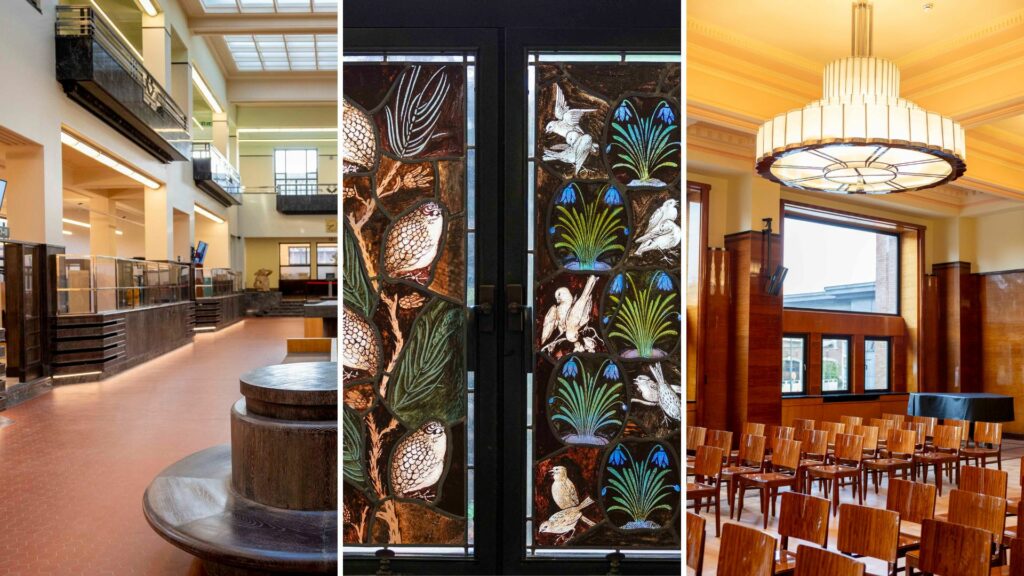Brussels is not only the capital of Art Nouveau, but it is also home to many impressive Art Deco buildings. One of them is undoubtedly the town hall of the municipality of Forest, which has now officially been reopened to the public after a decade of extensive renovations.
Built between 1925 and 1938 in Art Deco style by architect Jean-Baptiste Dewin, the Forest town hall symbolises the municipality's industrial boom after the First World War. In 2014, the building closed for renovations. After ten years of work, the town hall officially opened to the general public again.
"Many do not yet know that Brussels is also home to a huge treasure trove of Art Deco architecture in addition to Art Nouveau," said Ans Persoons, outgoing Brussels State Secretary for Urban Planning and Heritage. "Therefore, we will dedicate the year 2025 entirely to this intriguing art and architectural movement."
"This beautifully renovated town hall of Forest will undoubtedly be one of the eye-catchers during our Brussels Art Deco Year 2025, along with other masterpieces such as Villa Empain," she said.

Renovated town hall in Forest. Credit: Office of Ans Persoons
The town hall's location in the heart of Forest, the high degree of modernity, the choice of local materials and the rich iconography of the statues and stained-glass windows representing the municipality's history all make it a unique monument.
Nearly a century ago, the plan for the building was developed in close cooperation with Public Works city councillor Léon Wielemans and the city's chief engineer Paul Van Ysendyck. Together with Dewin, they visited the town halls of Laeken and Schaerbeek, among others.
The foundation stone was laid in May 1935, and three years later the new town hall was inaugurated by mayor Omer Denis in the presence of Belgium's Prime Minister Paul-Henri Spaak and Brussels Mayor Adolphe Max. Many of the decorative details (sculptures, stained-glass windows) were not completed until the following year.
Rediscovering the town hall
"We have finally been able to reopen the doors of this iconic location in the heart of Forest. The residents will be welcomed in much better conditions and in beautiful heritage restored to its former glory. This is a prestige project for our municipality and we are proud of the work done," said Françoise Père, Forest councillor for Public Works.
Since July, a number of municipal services already started moving back into the Forest town hall. Now, the Population Department also returned to the building and the municipal council will again take place in a brand new council chamber as of Tuesday.
Additionally, the renovation of the town hall was the ideal opportunity to reorganise and refocus the reception and services provided to residents, and to adapt the working environment for the municipality's employees to today's challenges of well-being at work.

Renovated town hall in Forest. Credit: Office of Ans Persoons
As this is a real challenge in a listed building that was built almost a century ago, much more than a simple rearrangement of services was needed, said Forest mayor Mariam El Hamidine.
"The challenge was enormous: to make the Town Hall a place for all Forest people, accessible to all, but also a workplace where all employees feel good, where it is good to work together again, talk to each other and develop," she said. "We really centred the human being in our thinking."
The town hall of Forest was designed in Art Deco style but also shows clear similarities to the Stoclet Palace (in Woluwe-Saint-Pierre), especially with its off-centre tower with vertical windows that is decorated with sculptures.
Neo-Renaissance
Dewin's concept of the town hall focused on modernity while paying homage to the prestigious buildings of the past. The choice of materials (brick and bluestone), the tall tower and the abundance of sculptures are reminiscent of medieval town halls and Flemish neo-Renaissance buildings, but the colour of the bricks, the shape of the tower and the updated iconography of the statues are very modern.
The renovation took place over ten years, with all municipal services moving to different locations to enable the project in three phases. The first phase (completed in 2016) focused on the restoration of the external facades. The second phase of the restoration (which began in 2017 and has just been completed) focused on the interior of the building and bringing it up to safety and accessibility standards.
In the next phases of the project, the attic space will be converted to optimise the operation of municipal services.

